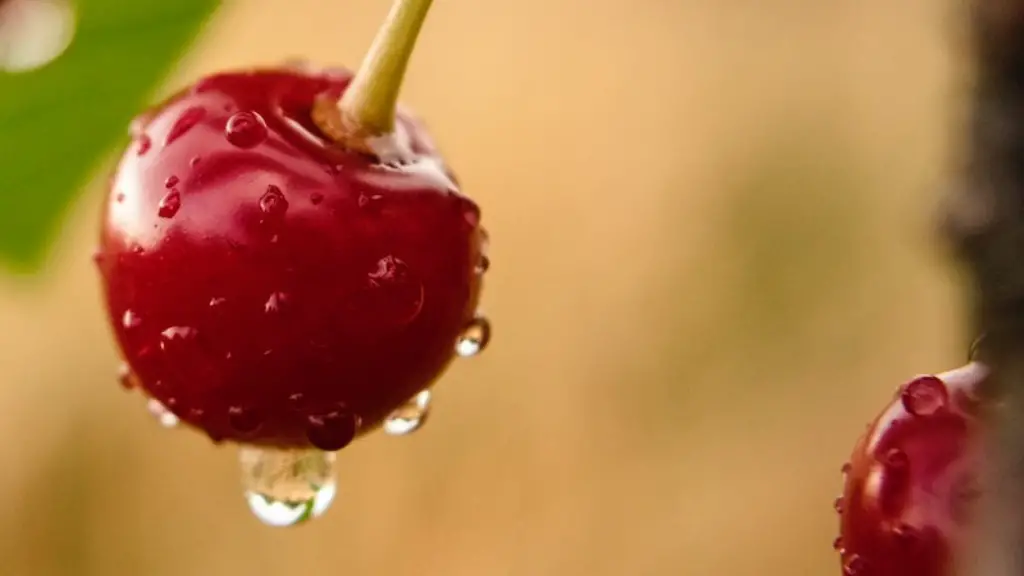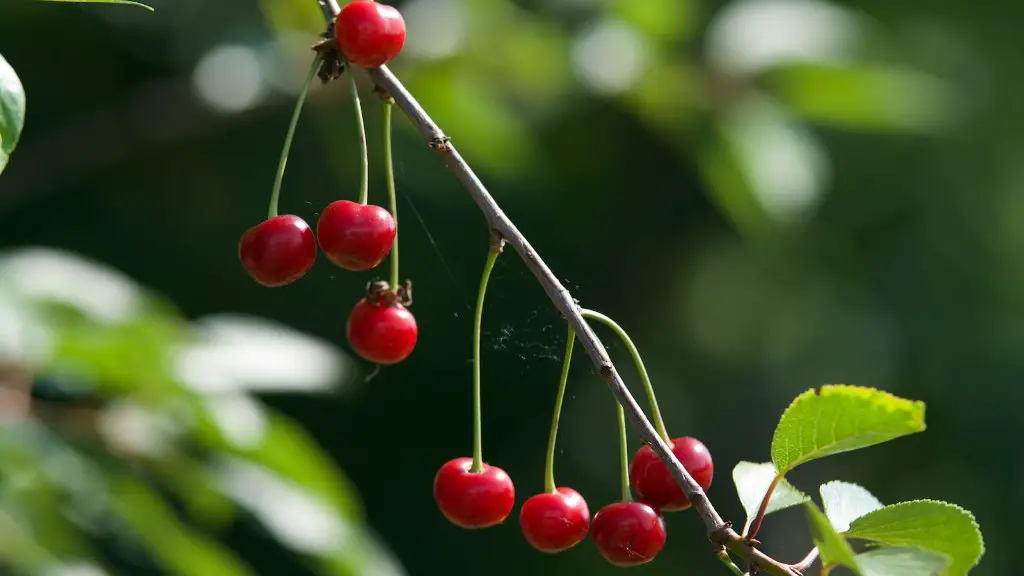Background Information
Cherry trees are one of the most widely-grown trees, with their beautiful and delicate pink or white flowers in addition to their tasty fruits. These trees belong to the family of Rosaceae, which includes various kinds of fruits, including plums and apples. Depending on the species, cherry trees take between two and five years to fully mature and produce fruits. To get the maximum amount of fruits, cherry trees need to be in a well-drained and moist area, as this will ensure a great return of fruit production.
Time to Maturity
Cherry trees usually take anywhere from three to five years to reach full maturity, though younger trees generally tend to produce more fruit than their older counterparts. It is important to note that the growing rate of cherry trees can vary quite a bit, depending on the environment they are planted in. Expectations should be adjusted accordingly, and these some considerations should be taken into account before planting cherry trees.
Climate
Cherry trees require a healthy climate in order to reach their full potential. They enjoy balmy, mild temperatures during the summer months, and can also tolerate short cold spells. Most cherry tree varieties cannot withstand harsh winter conditions, so winter protection measures may be necessary for colder regions of the world in order for the trees to survive and grow.
Pruning
For fruit production, pruning is necessary to shape the tree and allow light to reach the inner branches. Pruning also helps keep the tree in check, ensuring it remains under a manageable size. If cherry trees are not pruned properly and regularly, it can take much longer for the trees to yield fruit.
Fertility
Cherry trees need to receive an annual dose of fertilizer and mulching in order to produce an abundant harvest. This will provide the nourishment the tree needs in order to reach maturity and bear fruit. It is important to research the soil type and amounts of fertilizer needed before planting a cherry tree in order to ensure its health and ability to reach maturity.
Watering
Cherry trees need to be watered regularly in order to produce fruit and reach full maturity. A lack of water can lead to poor fruit production or even cause the tree to die, so it is important to monitor water levels and make sure the tree is receiving enough water. This is especially important during the summer months when the tree is more vulnerable to drought.
Harvest Time
Cherry trees can take two to five years to reach maturity, however once the fruit does appear it is not a long wait for the harvest. Depending on the variety and type of cherries, fruits can be harvested within two to three weeks of flowering. The cherries can also be harvested a few weeks before they are completely ripe and stored in a cool place to further ripen.
Proper Planning
Growing cherry trees takes a decent amount of time and dedication. With proper planning, adequate water, balanced fertilizer and pruning, cherry trees will eventually reach maturity and provide years of delicious harvests. It is important to think long-term and take into consideration the climate and soil type before planting cherry trees to ensure a successful harvest.
Genetic Diversity
Cherry trees are known for their varied genetic diversity and ability to adapt to conditions. Different varieties of cherry trees have been developed to withstand different climates and certain environmental features such as salty soil, cold winters and dry summers. This has allowed cherry trees to successfully grow in various places all over the world, making them one of the most popular and widely grown fruit trees.
Pest and Disease Management
Cherry trees are vulnerable to many diseases and pests, and it’s important to be vigilant and take necessary precautions to ensure their health. Regular pest and disease management, such as pruning and chemical treatments, should be done on a regular basis in order to ensure cherry trees reach maturity and stay healthy.
Costs
The cost of planting cherry trees depends on the variety and size, but the average cost of a cherry tree ranges from $50-$150. Keep in mind that the cherry tree needs to be planted in a well-drained, moist area to produce the best-tasting fruit. In addition, pruning and fertilizing are necessary to ensure a healthy harvest, thus increasing the overall cost of growing a cherry tree.
Benefits
The benefits of growing cherry trees are numerous. They are a beautiful addition to any landscape, produce delicious-tasting fruits and require minimal care once established. By planting different varieties of cherry trees, gardeners can enjoy fresh fruits as early as late spring and up until early fall. Cherry trees are also an excellent source of essential vitamins, minerals, and antioxidants needed to maintain a balanced and healthy diet.
Yield
Cherry trees are capable of producing a large amount of fruit. Depending on the variety, cherry trees can produce anywhere from 20-50 lbs. of fruit with the main harvest occurring anywhere from late spring to early summer. Selecting the right variety of cherry tree will ensure the greatest yield, thus providing long-term rewards.
Pollination
The pollination process for cherry trees is vital for fruit production. Cross-pollination is necessary for cherry trees to bear fruit, as most cherry trees are self-sterile. There are some varieties of cherry trees that are self-fertile, however planting a different variety in close proximity to the tree will ensure greater and more quality fruit production.
Storage
Cherries are fragile fruits that can deteriorate quickly. If cherry trees are not cared for properly and maintained regularly, the fruits can spoil quickly and the trees will not reach their full potential. Cold storage is a must for cherry fruits, and they should be kept in a cool place with low temperature and humidity to keep the fruit fresh.



